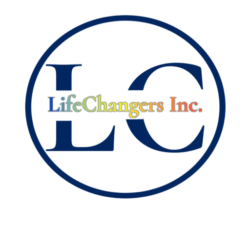Creative Expression
Art has the ability to inspire, provoke thought, and bring people together, making it a powerful tool for addressing social issues and advocating for justice.
Activist art is art that is created with the intention of promoting social or political change.
From protest posters to street murals, activist artists use their creativity to raise awareness about important issues like environmental conservation, human rights, and racial equality.
By visually expressing their beliefs and values, activist artists inspire others to take action and make a difference in the world.
Creative expression is a fundamental human right, allowing individuals to express themselves and share their unique perspectives with the world. Through painting, sculpture, music, dance, and other art forms, people can explore their emotions, tell their stories, and connect with others on a deeper level.
Creative expression fosters empathy, understanding, and mutual respect, building bridges between people from different backgrounds and experiences.
Cultural activism celebrates the diversity of human cultures and works to promote social justice and equality for all. Cultural activists use art and cultural events to challenge stereotypes, combat discrimination, and promote dialogue and understanding across cultural boundaries.
By celebrating cultural diversity and honoring the contributions of marginalized communities, cultural activism helps create a more inclusive and equitable society.
Social justice art is art that addresses issues of social injustice and inequality, such as poverty, racism, sexism, and environmental degradation.
Social justice artists use their creative talents to shine a light on systemic injustices and advocate for change.
Whether it’s through powerful visual imagery, thought-provoking performances, or immersive installations, social justice art challenges viewers to confront uncomfortable truths and imagine a more just and equitable world.
Community murals are a form of public art that brings people together to beautify their neighborhoods and express shared values and aspirations.
Community murals often involve collaboration between artists and community members, who work together to design and paint large-scale artworks that reflect the unique identity and character of their community.
By creating art in public spaces, community murals foster a sense of pride, ownership, and belonging among residents and help strengthen community ties.
Performance art is a dynamic and expressive form of art that combines elements of theater, dance, music, and visual art.
Performance artists use their bodies, voices, and creativity to convey powerful messages and engage audiences in thought-provoking experiences.
Whether it’s a street performance, a guerrilla theater piece, or an interactive installation, performance art has the ability to captivate, inspire, and challenge viewers to see the world in new ways.
Art therapy is a form of psychotherapy that uses art-making as a means of self-expression and healing.
Art therapists work with clients of all ages and backgrounds to explore their thoughts, feelings, and experiences through creative expression.
Through art therapy, individuals can process trauma, reduce stress, and develop coping skills in a safe and supportive environment.
Art therapy promotes self-discovery, self-expression, and emotional well-being, helping individuals to overcome challenges and achieve personal growth.
Public installations are large-scale artworks that are displayed in public spaces, such as parks, plazas, and streets.
Public installations have the power to transform ordinary spaces into vibrant cultural destinations and stimulate public dialogue and engagement.
Whether it’s a sculpture, a mural, or an interactive installation, public art invites viewers to interact with their surroundings in new and unexpected ways, fostering a sense of connection and community.
Visual storytelling is a powerful form of communication that uses images to convey complex ideas and emotions.
From ancient cave paintings to contemporary graphic novels, visual storytelling has been a fundamental aspect of human culture for thousands of years.
By combining words and images, visual storytellers can create compelling narratives that resonate with viewers on a deep and emotional level, inspiring empathy, understanding, and action.
Arts-based advocacy is a form of activism that uses the arts to raise awareness about social issues and promote positive change.
Whether it’s organizing a poetry slam, hosting a community art workshop, or staging a theatrical performance, arts-based advocates harness the power of creativity to mobilize people and amplify marginalized voices.
By engaging with the arts, individuals can become agents of change in their communities and work towards a more just and equitable society.
In conclusion, art has the power to inspire, educate, and transform our world. Whether it’s through activist art, cultural activism, or community murals, artists and activists are using their creativity to address social issues and advocate for positive change.
By harnessing the power of art, we can build more inclusive, equitable, and compassionate communities where everyone has the opportunity to thrive.

